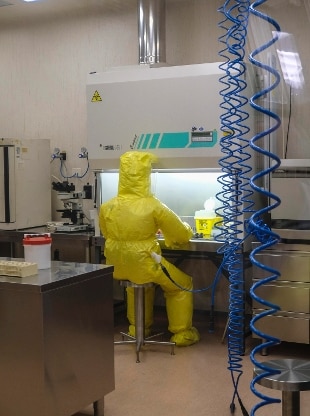Share
by Andrea Bettini Rome March 25, 2020 The latest unfounded news spread on the internet about the pandemic in progress is inspired by an old (absolutely correct) report by Tgr Leonardo. A service aired in 2015, which speaks of an engineered coronavirus in China and which is based on a scientific article published at the time in Nature. Artfully de-contextualized, it has become a gold mine for conspiracy theorists and has even pushed the prestigious scientific journal to categorically deny the link between that research and the disease that has spread over the world for a few months.What the 2015 report says
The Tgr Leonardo report describes a research conducted in China: the creation of a new lung virus for study purposes. The experiment was conducted by grafting a protein taken from bats on the Sars virus derived from mice. A virus capable of infecting man was also created and the story also generated a debate on the opportunity to carry out studies of this type.
The conspiracy theory
At first glance, parallels with the pandemic in progress are not lacking and it is precisely this that has caused a word of mouth on social media capable of quickly clogging many WhatsApp chats. Was the coronavirus causing thousands of deaths worldwide created in the laboratory in China years ago? Did it spread by human error or worse by someone's precise will?
It is not the same virus
The answer is categorical: there is no connection with that story. First of all, the virus mentioned by the Tgr Leonardo service is another and, among other things, SARS-COVID2 does not derive from mice. Furthermore, scientific studies have already taken into consideration the possibility that it was created by man and concluded that the hypothesis has no basis. In an article (https://www.nature.com/articles/s41591-020-0820-9) published by some researchers on Nature Medicine on March 17th, we read: “We do not believe that any scenario that originates in the laboratory is plausible". To sign it are Kristian G. Andersen of the Scripps Research Institute, Andrew Rambaut of the University of Edinburgh, Ian Lipkin of Columbia University, Edward Holmes of the University of Sydney and Robert Garry of Tulane University.
Nature's note
The spread of the news on social networks has even pushed Nature to intervene. At the beginning of an article that talks about 2015 research (https://www.nature.com/news/engineered-bat-virus-stirs-debate-over-risky-research-1.18787) this note has been inserted: “ We know this article is used as a starting point for unverified theories that the new coronavirus that causes COVID-19 has been engineered. There is no evidence that this is true: scientists are convinced that an animal is the most likely source of coronavirus. "

